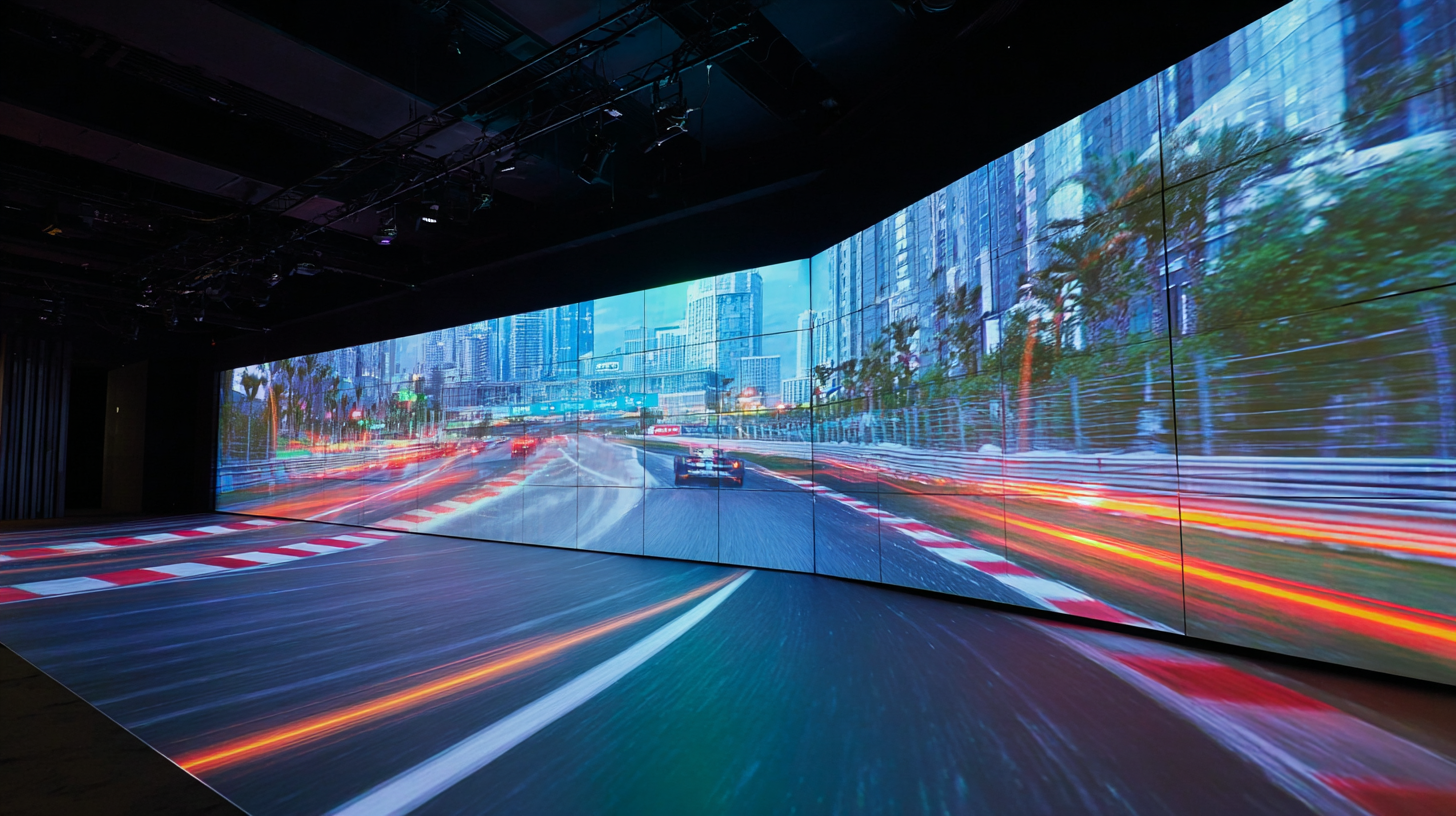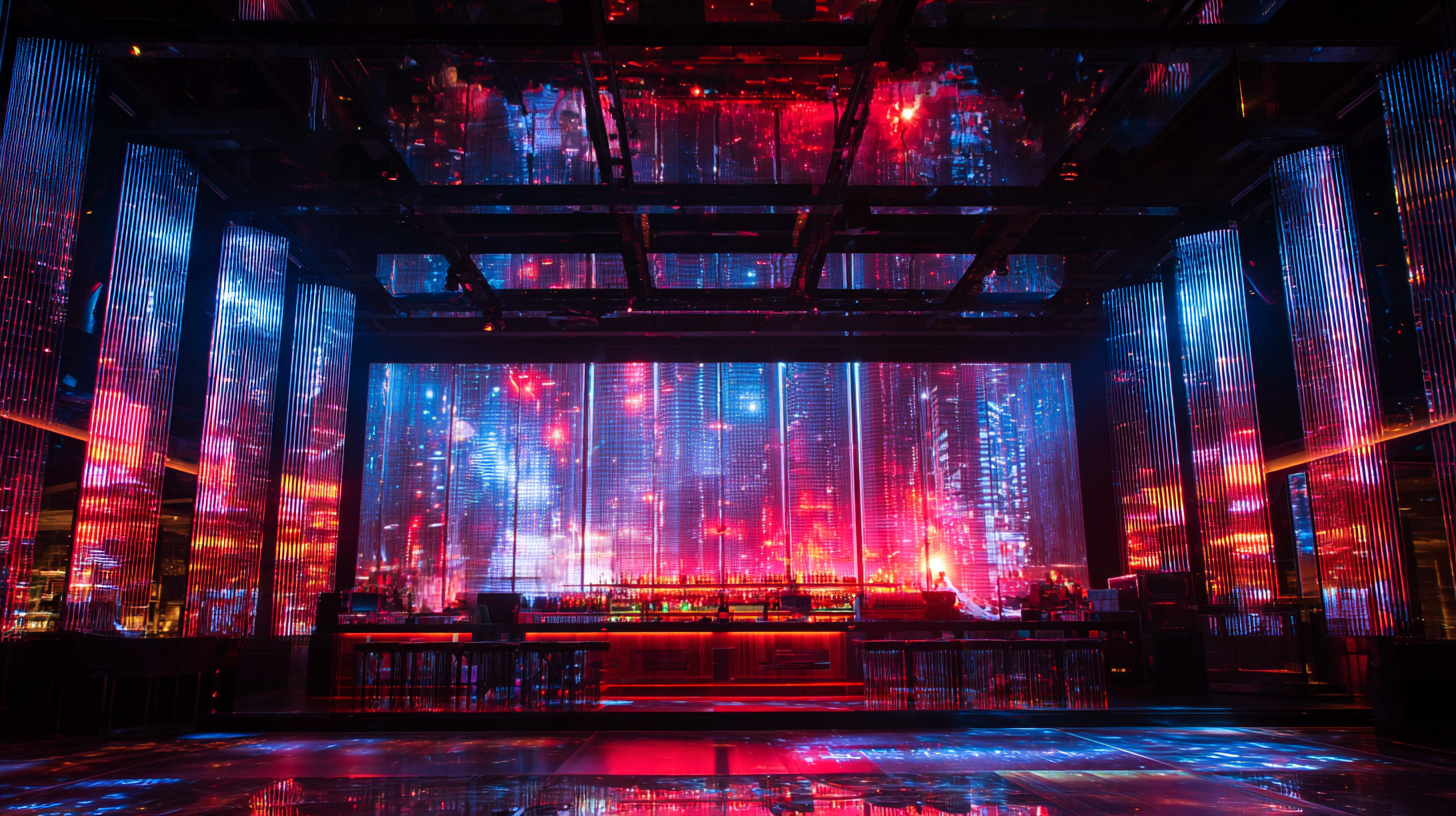
The rapid advancement of indoor LED display technology is reshaping the entertainment and business landscapes, offering unprecedented opportunities and experiences. Recent industry reports forecast that the global LED display market will grow to over $30 billion by 2025, with indoor applications driving much of this demand due to their vibrant color representation and high resolution. As businesses seek to engage customers in innovative ways, indoor LED displays are being utilized in various settings, from shopping malls to corporate environments, enhancing advertising capabilities and delivering immersive experiences. With resolutions reaching 8K and beyond, and technologies like HDR (High Dynamic Range) becoming commonplace, indoor LED displays are not just transforming design aesthetics but are also significantly boosting viewer engagement metrics, making them indispensable tools for modern communication strategies.

The rapid evolution of indoor LED display technology is reshaping the landscape of entertainment and business, driven by remarkable advancements that enable vibrant and dynamic visual experiences. Improved pixel density and enhanced color accuracy are pivotal in creating displays that captivate audiences. These developments allow for stunningly high-resolution images that transform environments, making them more engaging—whether in commercial spaces, theaters, or gaming arenas. As a result, businesses can craft immersive experiences that attract and retain customers, while entertainers can present visually striking performances that leave a lasting impression.
Moreover, innovations in LED technology are enhancing versatility and functionality. Flexible and curved displays are gaining traction, allowing for creative installations that adapt to various spatial constraints. Smart integration and connectivity enable seamless interactivity, where viewers can engage with content in real-time. Furthermore, advancements in sustainability are leading to energy-efficient solutions that reduce environmental impact. The convergence of these technological breakthroughs not only elevates visual communication but also opens new avenues for creative expression, pushing the boundaries of what indoor LED displays can achieve in the realms of both art and commerce.
The rapid advancement of LED technology is reshaping both the entertainment and business landscapes, providing immersive experiences that captivate audiences like never before. According to a report by MarketsandMarkets, the global LED display market is projected to reach USD 24.7 billion by 2025, growing at a CAGR of 14.2% from 2020. This growth is largely driven by the increasing demand for high-resolution displays in venues such as concert halls, sports stadiums, and retail locations, where visual impact is crucial for audience engagement.
Moreover, immersive entertainment experiences powered by LED technology, such as virtual reality environments and interactive digital installations, are becoming commonplace. Companies like Samsung are pioneering innovative solutions that integrate large-scale LED displays with interactive elements, enabling consumers to engage with content in a more dynamic way. The advent of technologies like MicroLED and MiniLED promises even brighter, more efficient displays, further enhancing the viewing experience. Reports indicate that these innovations not only elevate the aesthetic quality of presentations but also significantly improve energy efficiency, making them a sustainable choice for the future of entertainment and marketing.
| Dimension | Description | Impact on Entertainment | Impact on Business |
|---|---|---|---|
| Pixel Pitch | The distance between the center of one pixel to the center of the adjacent pixel. | Improves image clarity and viewing experience for large audiences. | Enables high-resolution displays for advertising and branding. |
| Brightness | Measure of the amount of light produced by the display. | Enhances scenic design and immersive environments in entertainment venues. | Essential for outdoor advertising effectiveness and visibility in daylight. |
| Color Accuracy | The ability of the display to reproduce colors faithfully. | Crucial for artistic representation and visual storytelling. | Enhances the quality of product displays and promotional materials. |
| Viewing Angle | The maximum angle at which a display can be viewed without a significant loss of quality. | Allows for broader audience engagement without compromise on quality. | Facilitates multiple viewer positions in retail spaces without quality loss. |
| Power Efficiency | The amount of energy consumed by the display relative to its output. | Saves costs and supports sustainable practices in entertainment events. | Reduces operational costs for commercial displays and installations. |
 Interactive LED solutions are at the forefront of transforming business environments, creating immersive experiences that engage customers and enhance operational efficiency. As companies seek innovative ways to attract and retain attention, dynamic LED displays play a crucial role. These systems not only allow for vibrant and eye-catching visuals but also enable real-time interaction, helping businesses tailor their messages to the audience's preferences.
From retail spaces to corporate offices, the versatility of interactive LED technology can provide personalized content that resonates deeply with users, fostering a more profound connection.
Interactive LED solutions are at the forefront of transforming business environments, creating immersive experiences that engage customers and enhance operational efficiency. As companies seek innovative ways to attract and retain attention, dynamic LED displays play a crucial role. These systems not only allow for vibrant and eye-catching visuals but also enable real-time interaction, helping businesses tailor their messages to the audience's preferences.
From retail spaces to corporate offices, the versatility of interactive LED technology can provide personalized content that resonates deeply with users, fostering a more profound connection.
Moreover, the integration of LED displays in business settings extends beyond mere aesthetics; they can drive functionality and improve communication. For instance, these displays can be utilized for wayfinding in large venues, streamlining customer navigation, or serve as platforms for live updates and promotions in retail settings. This adaptability to different contexts ensures that businesses can leverage LED technology to meet their specific needs and goals, ultimately revolutionizing how they interact with clients and stakeholders alike. The future of indoor LED display technology is not just about enhancing visual appeal but also about creating a dynamic environment where interactivity becomes a core aspect of user engagement.
The future of indoor LED display technology is poised to revolutionize both entertainment and business sectors, particularly in the realm of marketing strategies. As brands increasingly seek innovative ways to engage their audiences, LED displays provide dynamic solutions that not only capture attention but also enhance the overall customer experience. With advancements in image quality and interactive features, businesses can now create captivating narratives that resonate with consumers in real-time.
Tips for marketers looking to integrate LED displays into their strategies include focusing on high-quality content that aligns with brand identity. Imagery should be vibrant and relevant, as this draws in attention and creates lasting impressions. Additionally, consider incorporating interactive elements such as touchscreens or augmented reality to foster greater audience engagement. Real-time updates on promotions or events can also keep content fresh and relevant, ensuring that consumers stay connected.
Another important trend is the use of data analytics to measure the effectiveness of LED display campaigns. By tracking viewer interactions and responses, brands can refine their strategies and optimize display placements. This data-driven approach not only maximizes ROI but also enables businesses to adapt quickly to changing consumer behaviors, making indoor LED displays a pivotal part of marketing innovation.
The future of indoor LED display technology presents an exciting opportunity for both entertainment and business sectors by enhancing user engagement through customizable applications. As user expectations evolve, the integration of AI-based personalization engines is proving crucial. The growing market for these engines, expected to reach approximately USD 717.79 billion by 2033, signifies a shift towards more tailored customer experiences. This level of customization allows businesses to create dynamic LED displays that adapt to viewer preferences in real-time, resulting in more impactful interactions.

Furthermore, the rise of engagement platforms highlights the importance of fostering deeper connections with audiences. Companies can leverage data analytics and AI to understand user behaviors, preferences, and trends, thus optimizing LED displays to ensure content resonates effectively. The commercial display market is witnessing increased demand for interactive displays and video walls, which, when combined with cutting-edge technology, can transform traditional advertising into immersive experiences. This synergy between customizable LED applications and advanced personalization strategies promises to reshape how businesses communicate with their customers, drive engagement, and ultimately boost retention rates.





